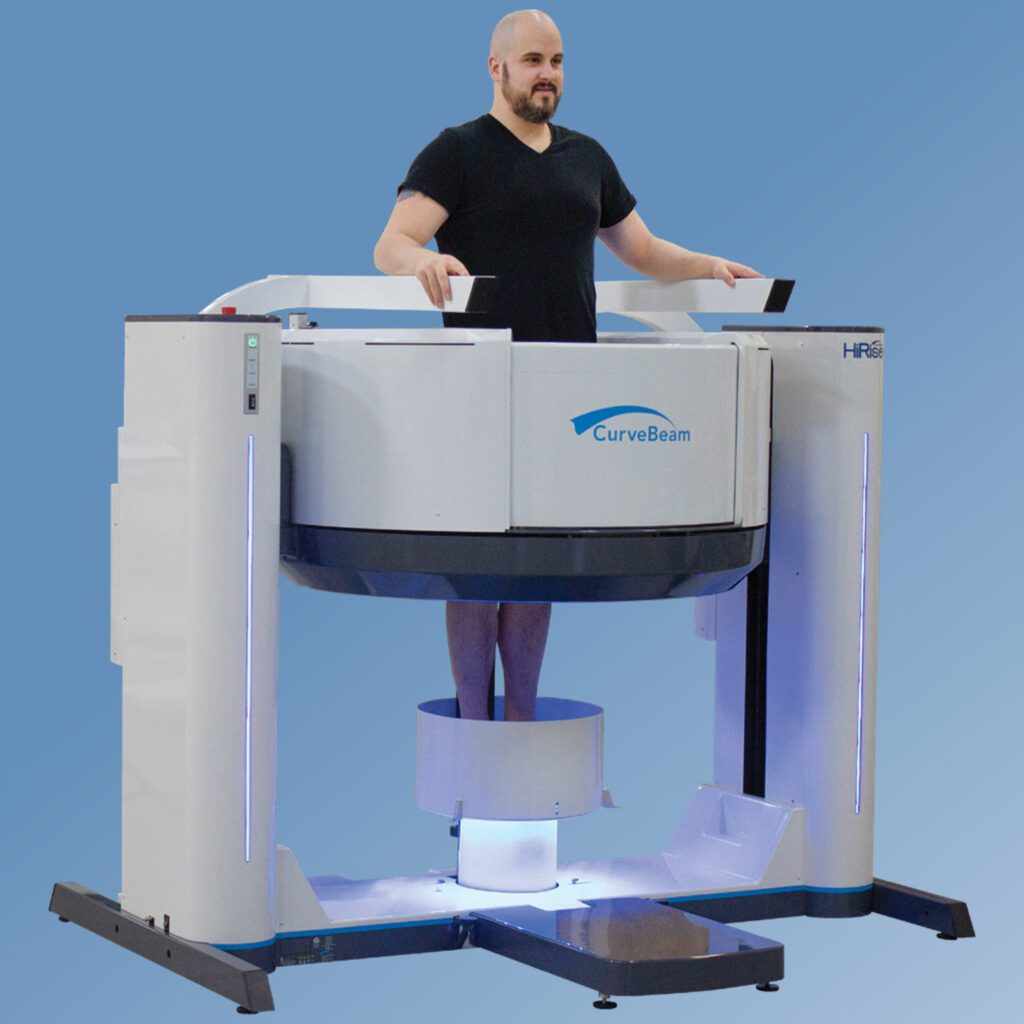Advancements to CT scans are making the process more efficient and accurate than ever.
A computed tomography scan, best known as a CT scan, is a medical imaging technology that provides detailed three-dimensional images of a patient’s bones and joints. Advancements to this noninvasive technology have greatly enhanced its process, exemplified by the bilateral, weight-bearing system.
How Does It Work?
Unlike traditional CT scans, which require patients to lie still on a table that then slides into the scanner, a bilateral, weight-bearing CT machine allows patients to stand upright. When receiving a weight-bearing CT scan, you will first step onto a circular platform, using handlebars to assist you. The entry doors will close around your legs as you stand in place, and the operator will begin the brief scan. You will then be free to exit the machine, after which your scan is complete and ready for analysis.


The Benefits of Bilateral, Weight-Bearing CT Imaging
Multi-extremity capability. In addition to the weight-bearing function for the legs, this technology can also provide non-weight bearing scans for the upper extremities. Multiple functions allow this standing system to attend to a wide range of imaging needs.
Natural patient stance. Weight-bearing CT machines allow patients to stand normally, which helps surgeons make more informed decisions about alignment.
Quick scan time. Traditional CT scans take between 10-30 minutes, while a bilateral, weight-bearing scan takes a minute or less. This efficient system optimizes the CT scanning process and allows both doctor and patient to review results sooner.


